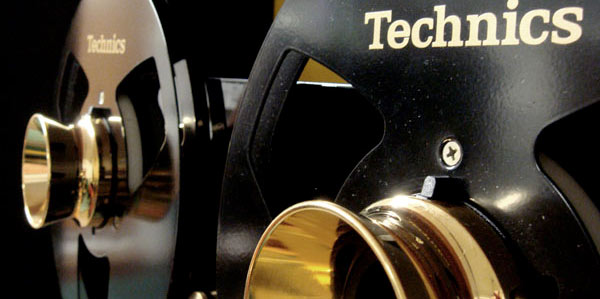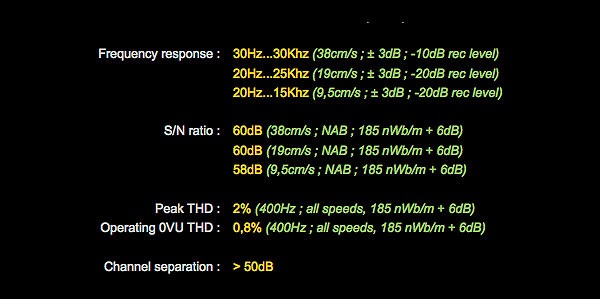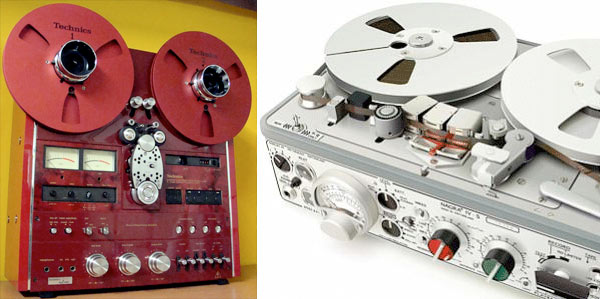Tape to Vinyl LP to Tape Equals Better Sound!
Alan Kanter is an audio engineer and electronics repair technician in Los Angeles…and very good at both. He’s been a friend for years and I run into him at McCabe’s Guitar Shop whenever I manage to get there for a concert (he is one of the house engineers). He sent me a link to a website that specializes in restoring and reselling Technics RS-1500U reel-to-reel machines. There is really nothing new about resurrecting vintage technologies, upgrading the electronics, aligning the heads and even painting them custom colors but this site’s FAQ page promotes the idea of making your own transfers of existing source materials as a way to get “better sound”.
Technics (a division of the Japanese consumer electronics giant Panasonic) introduced these machines in the 70’s and continued to manufacture them until the 80’s. They were heavily marketed and became quite popular with amateur recordists and audiophiles. If you were into audio in those days, you had to have a reel-to-reel machine. But there’s a big difference between consumer machines and units intended for professionals. It was true back then and it’s still true today. The original retail price of an RS-1500U was between $1500-1800, which was a substantial investment in those days (it still is!). J-corder sells his refurbished and upgraded machines for between $4500 and $20,000 depending on the options.
Figure 1 – Specs for a Technics RS-1500U reel-to reel tape deck.
The features of the RS-1500U were impressive. They were attractive consumer machines because they were capable of playing at 3-3/4, 7-1/2 and 15 ips (inches per second). Virtually all professional machines were set up to run at 7-1/2 and 15 ips OR 15 and 30 ips. They also featured both two-track and quarter track heads. The technical specifications were in line with consumer machines. For example, the frequency response reaches 30 kHz at 15 ips (this is at a fairly low -10 dB level and is accurate within plus or minus 3 dB). However, the Signal to Noise ratio is much lower than a professional machine. At 15 ips, the Technics RS-1500U can achieve 60 dB (or equal to 10-bits in PCM digital…my Nagra gets to 72 dB!) but this includes 2% THD (total harmonic distortion). Another interesting specification puts the crosstalk at greater then 50 dB. This spec tells you how much of the left channel is going to leak into the right and visa versa. Not so good.
So the guy at J-corder enters the mystical world of quality comparisons on his “Why” and “FAQ” page. Alan’s favorite question and response is among my favorites as well:
Does the sound get degraded from the original source when you record?
No it doesn’t. Believe it or not, it will actually sound BETTER. I know it doesn’t seem possible but hearing is believing. Once you hear the beautiful sound of tape you will choose tape over the original source every time. It is hard to believe but true.
I can’t disagree that Jeff (the “J” in J-corder) must love the sound of analog tape but he’s making a ridiculous statement. The sound of an analog tape copy may be different than the original but it will never equal the specifications of the source. In fact, if your goal is to maintain the best dynamic range and the source actually contains a reasonable S/N ratio, any tape copy will reduce that spec by 6 dB. That’s just the way it is unless you believe in flubber (sorry for the reference to a substance from a 60’s era Disney movie). This claim is “hard to believe” because it’s just a flat out lie!
Here’s my favorite. Jeff is strongly pushing the idea of making your own copies on analog tape. He rejects the notion that you should purchase expensive tape copies from The Tape Project of other outlets and recommends that everyone who owns a J-corder can be an audio engineer without any training or experience. This is the question and response:
Is it hard to make your own tapes?
No, it’s actually very easy. You can record right from your vinyl LP, a CD or MP3. After you make your first tape you’ll get used to the process and it will be very easy for you to make your own tapes.
I’m not saying that making analog tape recording is rocket science but it is not as simple as hitting record and play with a blank reel of tape strung up on your machine. There’s setup procedures involving alignment tapes, bias tweaking, oscillators regular cleaning and knowing what levels will result in an optimal tape copy. But my favorite statement in his response is that you might want to copy your MP3 files to analog tape! Is he kidding? Would you actually purchase a $5000 plus vintage consumer reel-to-reel deck from the 70s/80s AND a $50 reel of new tape to make an analog copy of an MP3 file? I hope not.
Figure 2 – A Technics 1520 and a Nagra IVs. One is flashy and one is functional. Both are very cool to look at but only one rocks at recording.
If you visit the site, you’ll see a gallery of these machines outfitted with carbon fiber, painted black or red with reel hubs in various colors. It’s a veritable fashion show of machines. And I admit I’m a geek for cool looking machines. But isn’t the ultimate point to record and reproduce great audio. My Nagra doesn’t have carbon fiber and features only machined aluminum but I’ll take it any day over a 40 year old consumer reel-to-reel deck.




Mark, you didn’t put enough exclamation marks on the heading for this article. I suggest, maybe, ten?